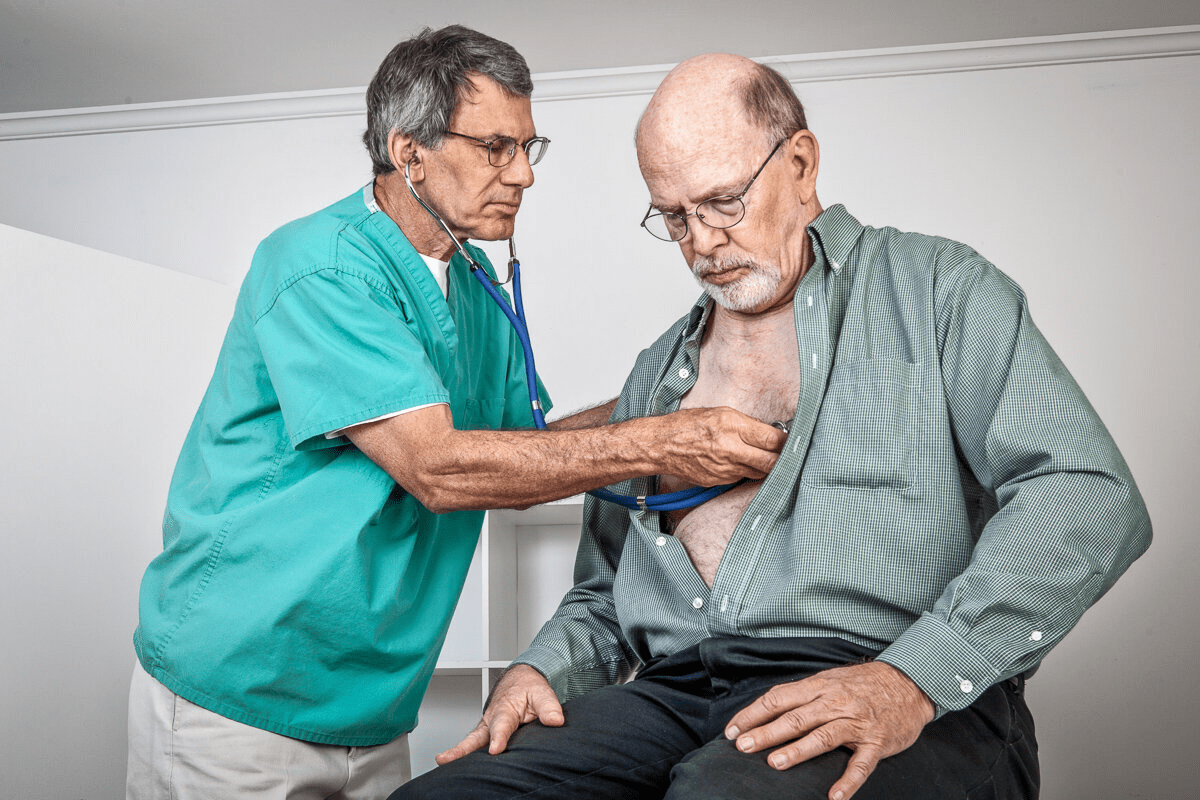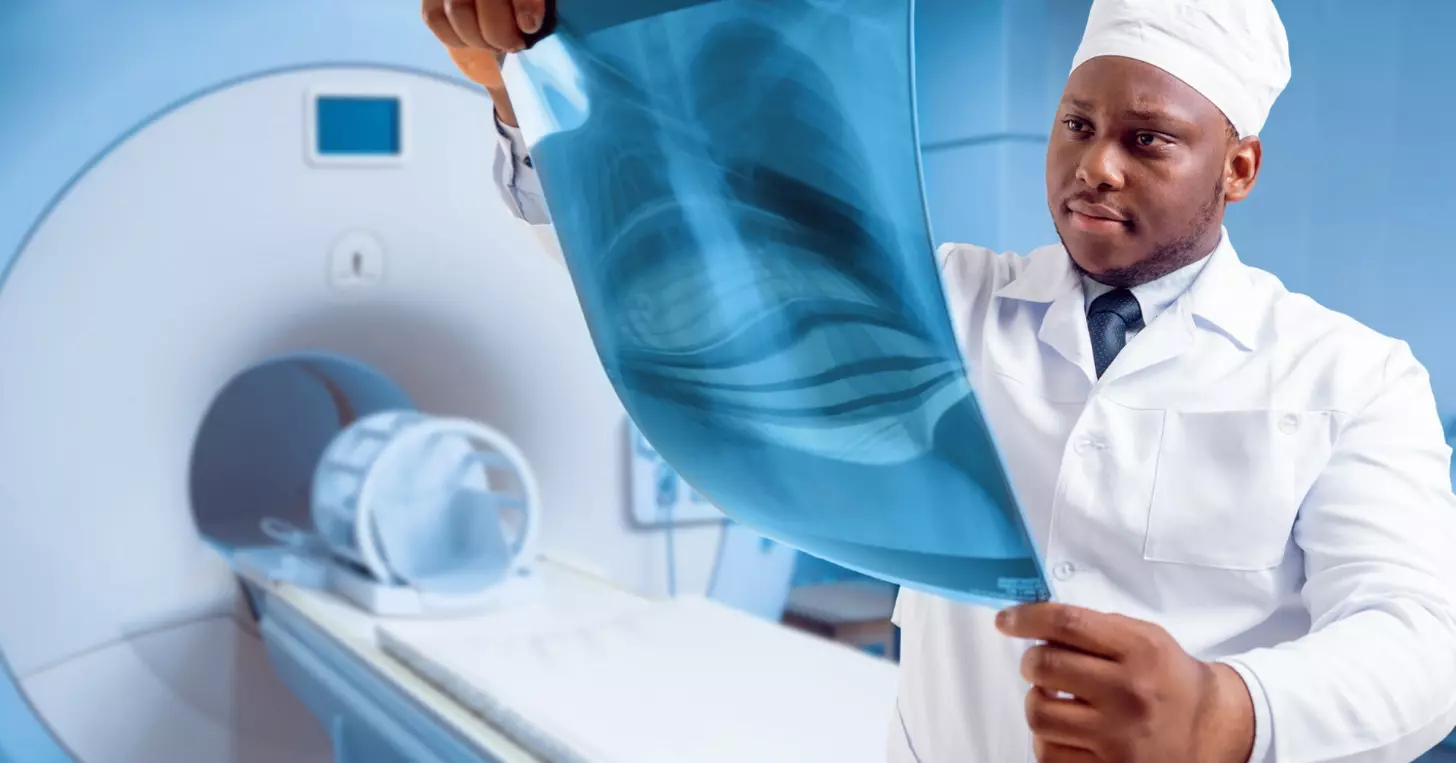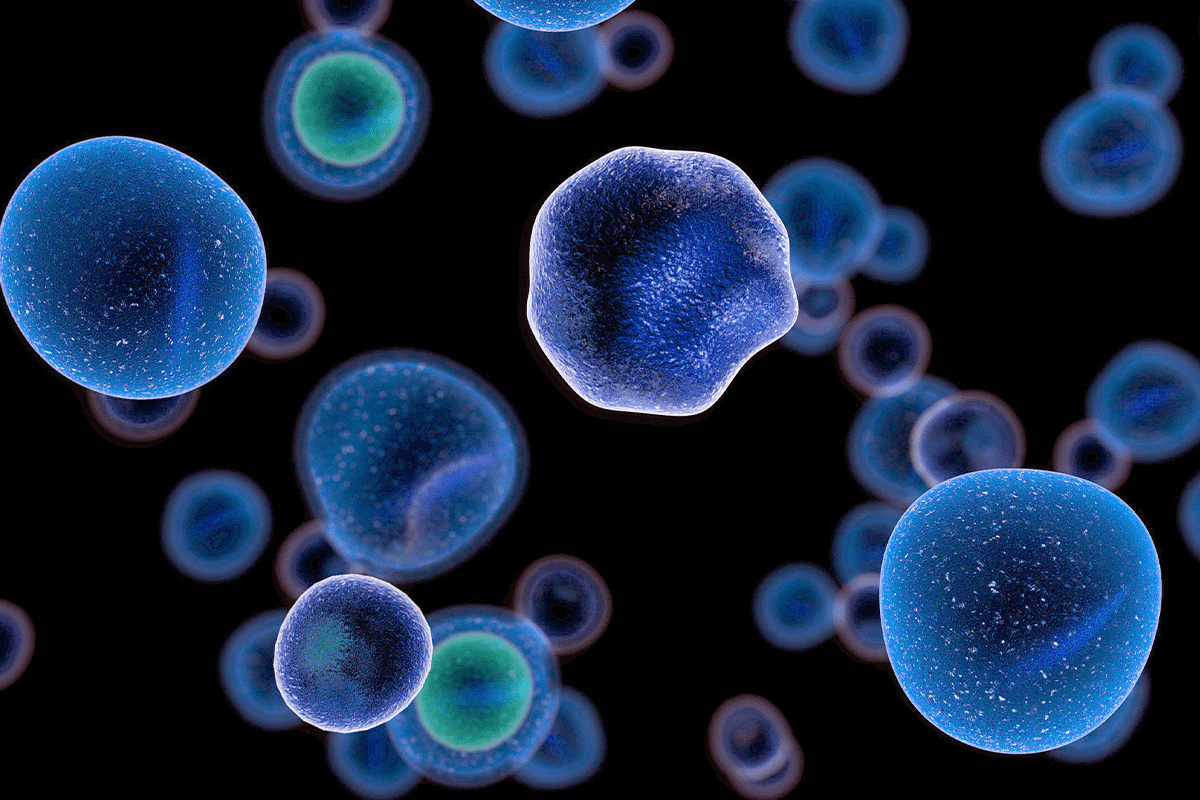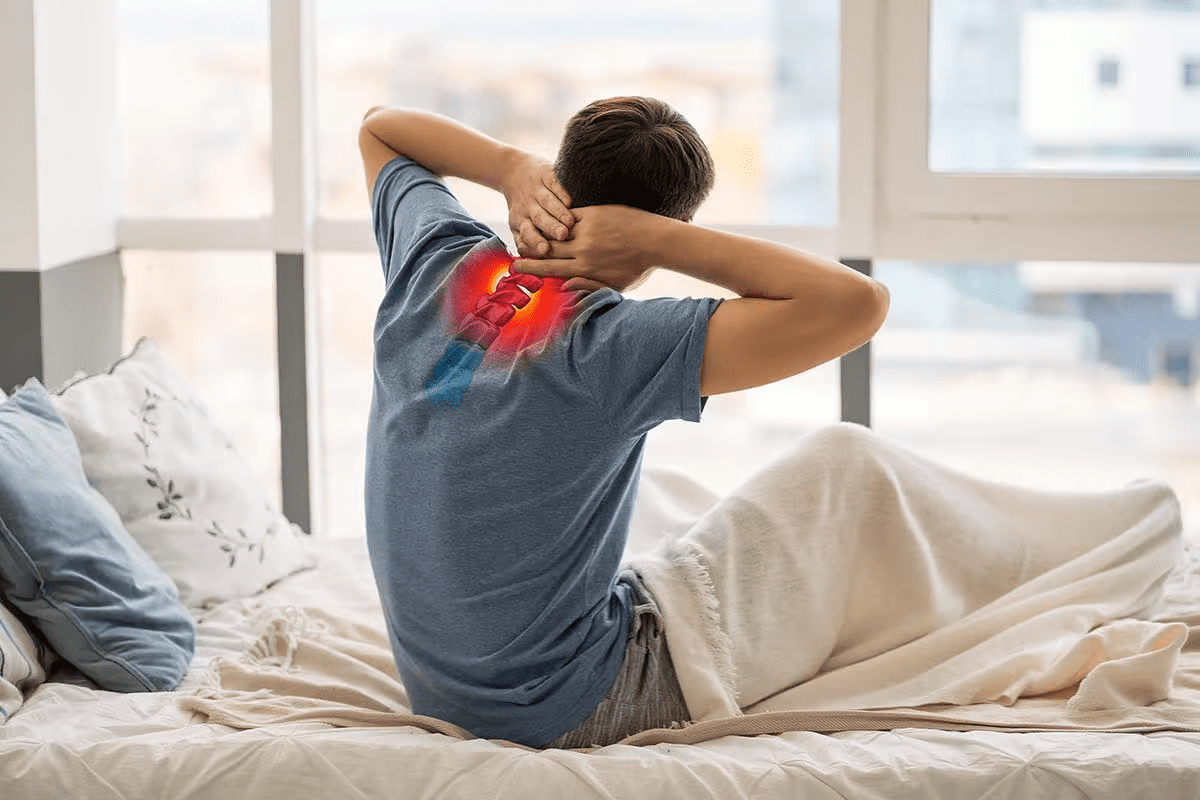Last Updated on November 26, 2025 by Bilal Hasdemir
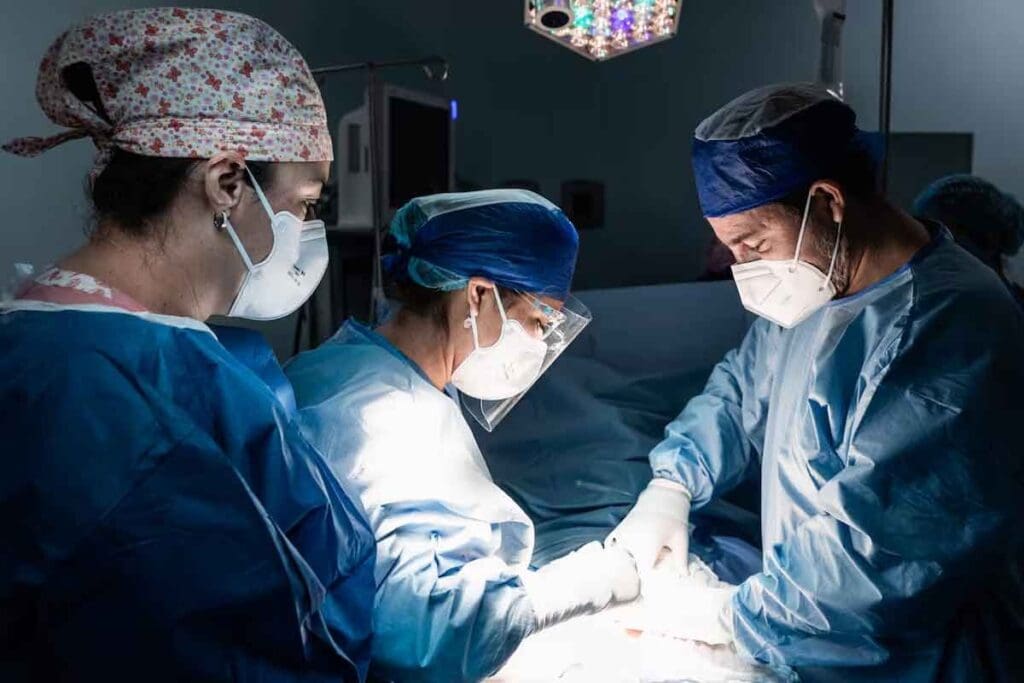
An aortic aneurysm is a serious condition that can be life-threatening. It affects many adults, mostly older men and those who have smoked.
It’s important to know the risks and treatment choices. There are two main treatments: open surgical repair and endovascular aneurysm repair (EVAR). Both aim to stop the aneurysm from growing or rupturing and help patients understand how to fix an aortic aneurysm safely and effectively.
Key Takeaways
- Understanding aortic aneurysm risks and treatment options is key.
- Treatment focuses on stopping the aneurysm from growing or rupturing.
- Open surgical repair and EVAR are the main treatment choices.
- Liv Hospital uses advanced techniques and focuses on the patient.
- Quick action is needed for the best treatment results.
Understanding Aortic Aneurysms

It’s important to know about aortic aneurysms to spot risks, symptoms, and treatments. An aortic aneurysm is a serious condition that needs careful management.
What Is an Aortic Aneurysm?
An aortic aneurysm happens when part of the aorta gets too big or bulges. This is because the aortic wall gets weak. If not treated, it can cause serious problems like rupture or dissection.
Types of Aortic Aneurysms
Aortic aneurysms are divided by where they happen and what they look like. The main types are:
- Abdominal Aortic Aneurysms (AAA): Found in the belly area of the aorta.
- Thoracic Aortic Aneurysms (TAA): Happen in the chest area of the aorta.
- Thoracoabdominal Aortic Aneurysms (TAAA): Span from the chest to the belly.
| Type of Aneurysm | Location | Characteristics |
| Abdominal Aortic Aneurysm (AAA) | Abdominal region | More common, often without symptoms |
| Thoracic Aortic Aneurysm (TAA) | Thoracic region | Can cause chest pain, often linked to genetic issues |
| Thoracoabdominal Aortic Aneurysm (TAAA) | Thoracic and abdominal regions | Complex, affects multiple parts of the aorta |
Risk Factors and Prevalence
Several things can make you more likely to get an aortic aneurysm. These include:
- Smoking: It greatly raises your risk.
- High Blood Pressure: It can weaken the aortic wall.
- Family History: If your family has a history, you’re at higher risk.
- Age: Risk goes up after 65.
Aortic aneurysms are more common in older adults. The exact number varies by population.
Detecting and Diagnosing Aortic Aneurysms
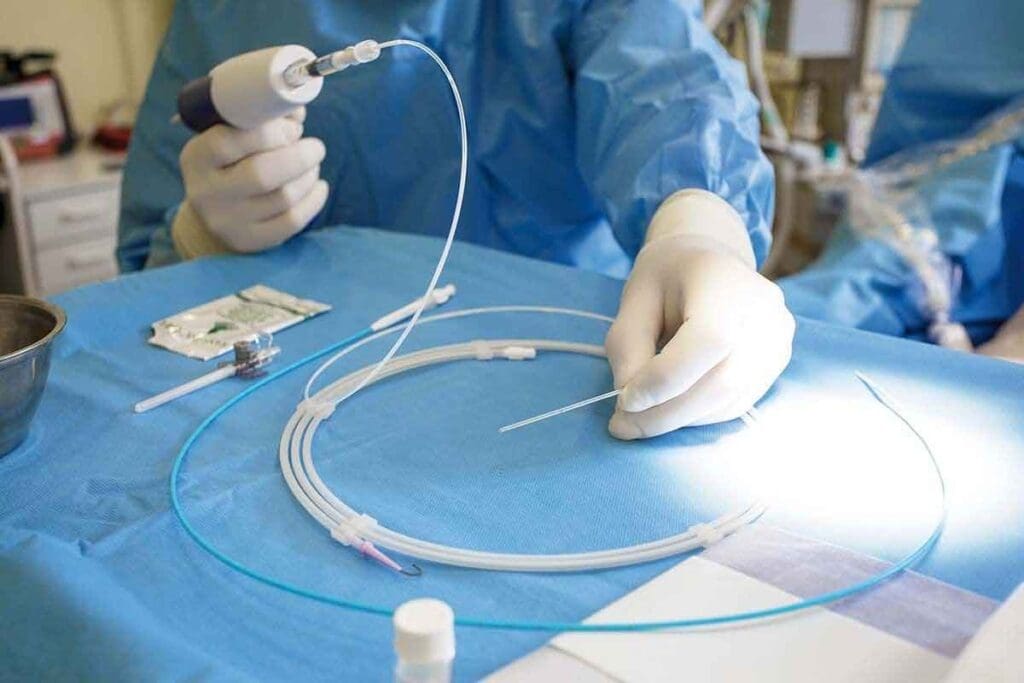
Aortic aneurysms can be hard to spot because they often don’t show symptoms until they burst. It’s key to know the signs and use the right imaging tests for early detection.
Common Symptoms and Warning Signs
Many aortic aneurysms don’t show symptoms until they burst. But, some people might feel back pain, abdominal pain, or pulsating sensations in their belly. Spotting these signs early can lead to quick medical checks.
An aortic aneurysm might also cause other symptoms. For example, it can press on nearby parts, causing digestive issues or venous thrombosis. Knowing these signs is why early diagnosis is so important.
Diagnostic Imaging Techniques
Imaging tests are key in finding aortic aneurysms. Ultrasound, computed tomography (CT) scans, and magnetic resonance imaging (MRI) are the main tools. Each has its own strengths and is picked based on the patient and the aneurysm.
| Imaging Modality | Advantages | Limitations |
| Ultrasound | Non-invasive, quick, and cost-effective | Limited detail for complex aneurysms |
| CT Scan | High-resolution images, detailed anatomy | Radiation exposure, contrast required |
| MRI | No radiation, excellent soft tissue detail | Higher cost, claustrophobia possible |
Choosing the right imaging test is key for accurate diagnosis and treatment planning. For example, CT scans are often used for their detailed images needed for surgery.
Understanding Your Diagnosis
Knowing the size, location, and type of aneurysm is important. This info helps decide the best treatment and assess the risk of rupture. Patients should talk to their doctor to understand their diagnosis and treatment plan.
When deciding on treatment, the aneurysm’s growth rate and the patient’s health are considered. Regular check-ups and monitoring are key in managing aortic aneurysms.
Initial Assessment and Risk Stratification
Getting a correct initial assessment and risk stratification is key for treating aortic aneurysms. It involves looking at several important factors. These help predict the chance of rupture and guide treatment choices.
Determining Aneurysm Size and Growth Rate
The size and how fast an aortic aneurysm grows are key to its risk. Larger aneurysms and those growing faster are at higher risk of rupture. To keep track, doctors use imaging like ultrasound or CT scans. This helps monitor size and spot any changes.
A study on preoperative risk assessment shows how important accurate sizing is for treatment planning.
Location-Based Risk Assessment
The aneurysm’s location in the aorta also affects its risk. Aneurysms in the ascending aorta or aortic arch might have different risks than those in the descending aorta. Knowing the exact location helps doctors choose the best treatment.
Patient-Specific Risk Factors
Other than the aneurysm itself, a patient’s age, health, and other medical conditions are also looked at. For example, those with high blood pressure or who smoke might face higher risks. These factors are vital in figuring out the overall risk and deciding on treatment.
By combining these assessments, doctors can sort patients by their risk of aneurysm rupture. This allows for tailored management plans. These plans aim to balance the risks and benefits of different treatments.
How to Stop an Aortic Aneurysm from Growing
To stop an aortic aneurysm from growing, managing high blood pressure and cholesterol is key. This involves both medical treatments and lifestyle changes.
Blood Pressure Management
Keeping blood pressure under control is vital. High blood pressure can strain the aortic walls, making aneurysms worse. Doctors often use beta-blockers and ACE inhibitors to manage it.
Regular blood pressure checks and sticking to your meds can help a lot. Always talk to your doctor about changing your treatment plan if needed.
Cholesterol-Lowering Medications
High cholesterol can make an aortic aneurysm grow. Statins and other meds can lower cholesterol, reducing plaque in arteries.
These meds can help keep the aneurysm stable and stop it from growing. Regular check-ups with your doctor will help see if the treatment is working.
Lifestyle Modifications
Changing your lifestyle is also important. Quitting smoking is a big step, as smoking increases aneurysm risk.
Eating well and staying active are also key. A healthy diet and regular exercise can help manage blood pressure and cholesterol. This reduces the risk of aneurysm growth.
By managing blood pressure, using cholesterol meds, and making lifestyle changes, you can lower aneurysm risk. Working with your healthcare team to create a personalized plan is essential.
Medical Management and Surveillance
For those with an aortic aneurysm, managing it well is key. This includes regular checks and the right treatment. It helps prevent serious problems and keeps patients safe.
Medication Protocols
Medicine is a big part of managing aortic aneurysms. Blood pressure control is very important. High blood pressure can make the aneurysm grow bigger.
Doctors often use beta-blockers and ACE inhibitors to keep blood pressure in check. They might also prescribe statins to lower cholesterol. This helps reduce the risk of heart problems.
Imaging Follow-up Schedule
Keeping an eye on the aneurysm’s size is vital. The timing of these checks depends on the aneurysm’s size and the patient’s health. Usually, ultrasound or CT scans are used for these checks.
For smaller aneurysms, doctors might check them once a year. But for bigger ones, they might need to be checked more often.
| Aneurysm Size | Recommended Imaging Frequency |
| Less than 4 cm | Annual ultrasound |
| 4-5.4 cm | Every 6-12 months CT or ultrasound |
| Greater than 5.4 cm | Every 3-6 months CT or ultrasound |
When to Consider Surgical Intervention
Surgery is an option when the risk of the aneurysm rupturing is high. The decision depends on the aneurysm’s size, how fast it’s growing, and the patient’s health. Generally, surgery is recommended for aneurysms larger than 5.5 cm or those growing quickly.
Choosing to have surgery is a big decision. It involves a careful look at the patient’s health and what they want. A healthcare team will help make this choice.
By using medicine and regular checks, doctors can manage aortic aneurysms well. They can also decide when surgery is the best option, if needed.
How to Fix an Aortic Aneurysm: Treatment Decision Making
Choosing the right treatment for an aortic aneurysm involves many factors. It looks at the patient’s health and the aneurysm’s details. The goal is to find the best treatment that fits the patient’s needs and health status.
Factors That Determine Treatment Approach
Several key factors influence the treatment approach for aortic aneurysms. These include the size, location, and growth rate of the aneurysm, as well as patient-specific factors such as overall health, medical history, and lifestyle.
Aneurysm Size and Location: Larger aneurysms are generally at higher risk of rupture and may require more urgent treatment. The location of the aneurysm within the aorta also plays a critical role in determining the treatment approach.
Growth Rate: Aneurysms that are growing rapidly are considered more dangerous and may necessitate earlier intervention.
| Factor | Influence on Treatment |
| Aneurysm Size | Larger aneurysms are at higher risk and may require urgent treatment |
| Aneurysm Location | Location affects the complexity and type of treatment |
| Growth Rate | Rapidly growing aneurysms may require earlier intervention |
Discussing Options With Your Healthcare Team
Talking about treatment options with your healthcare team is key. It’s important to know the risks and benefits of each choice.
Key Considerations:
- The risks and benefits of surgical versus endovascular repair
- The chances of successful treatment and possible complications
- The impact on quality of life and life expectancy
Questions to Ask Before Treatment
Before treatment, ask your healthcare team important questions. This ensures you’re well-informed.
Recommended Questions:
- What are the risks and benefits of the recommended treatment approach?
- What are the alternatives to the proposed treatment, and how do they compare?
- What can I expect during the recovery process, and how long will it take?
Understanding the factors that determine treatment and talking openly with your healthcare team helps you make informed decisions.
Open Surgical Repair for Aortic Aneurysms
Open surgical repair is a complex procedure. It involves replacing the aneurysmal segment with a graft. This method has been used for decades and is a good option for many patients.
Candidate Selection for Open Surgery
Choosing open surgery depends on several factors. These include the aneurysm’s size and location, the patient’s health, and their medical history. Patients with larger aneurysms or those at risk of rupture are often good candidates. A vascular surgeon will evaluate each patient to decide the best treatment.
Surgical Procedure Step-by-Step
The open surgical repair process involves several steps:
- Making an incision in the chest or abdomen to access the aorta
- Clamping the aorta above and below the aneurysm to prevent blood flow
- Opening the aneurysm and removing the diseased segment
- Replacing the removed segment with a synthetic graft
- Suturing the graft in place and restoring blood flow
This procedure requires a lot of skill and precision. It’s usually done by an experienced vascular surgeon.
Recovery and Rehabilitation
Recovery from open surgical repair takes time. It can take weeks or even months of rest and rehabilitation. Patients are closely monitored for complications and must follow a strict care plan. This includes pain management, physical therapy, and lifestyle changes to aid in healing and prevent future issues.
Potential Complications and Risks
Open surgical repair comes with risks and complications. These include infection, bleeding, and respiratory or cardiac problems. Patients should be aware of these risks and talk to their healthcare provider. Knowing the possible complications helps patients prepare for recovery.
Endovascular Aneurysm Repair (EVAR)
EVAR is a new way to treat aortic aneurysms. It’s less invasive than traditional surgery. This method uses a stent graft to block the aneurysm from growing or rupturing.
Mechanism of EVAR
The EVAR procedure uses a stent graft. It’s put in through the femoral arteries with imaging help. The stent graft fits in the aorta, making sure blood goes through it and not the aneurysm.
Key components of the EVAR stent graft include:
- A durable fabric graft that lines the stent
- A metallic stent that provides structural support
- Attachment mechanisms to secure the graft in place
The EVAR Procedure Process
The EVAR procedure happens in a special lab or operating room. It involves accessing the femoral arteries and placing the stent graft. The goal is to make sure it’s in the right spot and working well.
Patient selection is critical for EVAR success. Doctors look at the aneurysm’s size, shape, and location. They also check the patient’s health and blood vessel structure.
Advantages Over Open Surgery
EVAR has many benefits over traditional surgery. These include:
- It’s less invasive, which means less damage to tissues and faster healing
- There’s less pain and discomfort after the procedure
- Patients can go home sooner and get back to their lives faster
Limitations and Considerations
EVAR isn’t right for everyone. It has limits like anatomical issues and the need for ongoing monitoring. There are also risks like endoleaks.
Long-term follow-up is key for EVAR patients. It helps catch and manage any problems early.
Emergency Treatment for Ruptured Aneurysms
A ruptured aortic aneurysm is a serious condition that needs quick medical help. It’s important to know the signs and emergency treatments to save lives.
Recognizing a Rupture or Dissection
A ruptured aortic aneurysm causes severe pain in the chest or back. You might also feel hypotension, tachycardia, and possibly lose consciousness. Spotting these symptoms early is key to getting the right care fast.
- Severe pain in the chest or back
- Low blood pressure
- Rapid heart rate
- Loss of consciousness
Emergency Surgical Interventions
Quick surgery is vital for treating a ruptured aortic aneurysm. The main goal is to stop the bleeding and fix or replace the damaged aorta. There are two main surgeries: open repair and endovascular aneurysm repair (EVAR).
Open repair needs a big cut to reach the aorta. EVAR is less invasive, using a stent graft through the groin arteries to block blood flow to the aneurysm.
Survival Rates and Recovery Expectations
Quick surgery greatly improves survival chances for a ruptured aortic aneurysm. But, recovery depends on several things. These include the patient’s health, the aneurysm’s size and location, and how fast treatment is given.
Survival rates go up with timely and right medical care. Recovery times vary. Some patients need a lot of rehab, while others recover faster.
Conclusion: Life After Aortic Aneurysm Treatment
After treatment for an aortic aneurysm, follow-up care is key. It helps ensure a good recovery and avoids complications. Regular visits to your doctor are important. They check on your health and answer any questions you have.
Experts at Johns Hopkins Medicine say a good follow-up plan is essential. It makes recovery smoother.
Follow your doctor’s advice on medication, diet, and activity. Eating well, managing blood pressure, and avoiding heavy lifting are important. Taking an active role in your recovery can lower risks and improve your life quality.
Knowing the signs of trouble, like pain, fever, or shortness of breath, is also important. If you notice these, get medical help right away. By understanding follow-up care and being proactive, you can face life after treatment with confidence.
FAQ
What is an aortic aneurysm?
An aortic aneurysm is when the aorta gets too big. It’s serious and can be deadly if it bursts.
How is an aortic aneurysm diagnosed?
Doctors use tests like ultrasound, CT scans, or MRI to find aortic aneurysms.
What are the risk factors for developing an aortic aneurysm?
High blood pressure, high cholesterol, smoking, and family history are risks.
How can I stop an aortic aneurysm from growing?
Keep your blood pressure down, take meds for cholesterol, and change your lifestyle to slow growth.
What are the treatment options for an aortic aneurysm?
You can have surgery, EVAR, or just watch it with regular checks.
How do I know if I need surgery for an aortic aneurysm?
It depends on the size, how fast it’s growing, and your health. Talk to your doctor.
What is EVAR, and how does it work?
EVAR is a small surgery that puts a stent-graft in the aorta. It stops the aneurysm from getting blood.
What are the benefits of EVAR compared to open surgery?
EVAR is less invasive. It means less pain, quicker recovery, and fewer risks.
What are the possible complications of aortic aneurysm treatment?
Risks include bleeding, infection, and damage to organs. They depend on the treatment.
How can I manage my condition after aortic aneurysm treatment?
Keep up with check-ups, make healthy lifestyle choices, and follow your meds.
What is the survival rate for ruptured aortic aneurysms?
Survival chances are 20-50%. It depends on how bad the rupture is and how fast you get help.
How often should I follow up with my healthcare team after aortic aneurysm treatment?
How often you see your doctor varies. You’ll need regular tests and visits.
Can I prevent an aortic aneurysm from occurring in the first place?
Some risks can’t be changed. But, managing blood pressure, quitting smoking, and living healthy can lower your risk.
References
- Wiebers, D. O., Whisnant, J. P., Huston, J., III, Meissner, I., Brown, R. D., Jr., Piepgras, D. G., Forbes, G. S., Thielen, K., Nichols, D., O’Fallon, W. M., & International Study of Unruptured Intracranial Aneurysms Investigators. (2003). Unruptured intracranial aneurysms: Natural history, clinical outcome, and risks of surgical and endovascular treatment. The Lancet, 362(9378), 103–110. https://www.sciencedirect.com/science/article/pii/S0140673603138603


